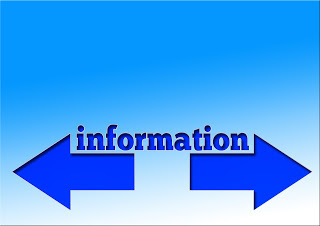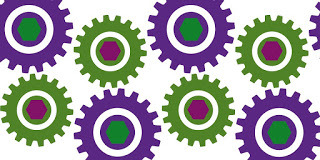Pearl Zhu's Blog, page 1238
April 7, 2017
The Three Stages of IT Maturity
 Nowadays information is abundant and technology is pervasive, Digital transformation or business initiatives today nearly always involves some form of technology implementation or information analysis. IT touches both hard business processes and soft human behaviors, and it plays a crucial role in driving changes and making a leap of the digital transformation. The digital connectivity and IT consumerization bring both challenges and opportunities for IT to shift from a support center to the differentiated business solutionary and move up its maturity level as the trusted business partner.
Nowadays information is abundant and technology is pervasive, Digital transformation or business initiatives today nearly always involves some form of technology implementation or information analysis. IT touches both hard business processes and soft human behaviors, and it plays a crucial role in driving changes and making a leap of the digital transformation. The digital connectivity and IT consumerization bring both challenges and opportunities for IT to shift from a support center to the differentiated business solutionary and move up its maturity level as the trusted business partner.
Running IT from surviving to striving, to thriving mode: Though information is growing exponentially and technologies are often the disruptive force behind the digital transformation. The majority of IT organizations today are still running in the surviving mode, react to the customers’ requests, overloaded and understaffed, struggled to align with the business, and get stuck at the lower level of maturity. Many companies still just treat IT as a backend function that enables them to do day to day tasks and keeps the lights on. In fact, “keep the lights on” is always fundamental, but to improve IT maturity, the forward-looking CIOs must be able to develop and optimize the IT operational function within itself. Being striving is to try to achieve the optimized result, and make the strenuous effort on IT management effectiveness and operational excellence. It is important to to have IT resources (people and operational IT processes) aligned with the business strategies/objectives for doing the right things; refined to the point that they are nimble, can adapt to changing business demands in a timely fashion, can be reapplied to altering business priorities and be effective with little down curve. To move up further, IT is thriving to grow vigorously, to flourish and become the game changer of the business, because a thriving IT can make true differences and bring the competitive business advantage effortlessly. It is important to take advantage of the IT vantage point to surface ideas proactively, but it is even more important to work with business stakeholders and make sure they work cohesively for managing innovation and discovering the premium solutions to either existing business problems or the emergent challenges. From “surviving to striving to thriving,” IT should not only work harder, but get smarter; not just answer “Yes, or No,” to the customers’ requests, but dig deeper via asking open questions such as “Why not,” “What if,” or “How about,” IT is becoming the strategic business partner.
Running IT from controlling to changing to catalyzing mode: At the traditional IT organizations, IT often acts the business controller and the business perceives IT as the department lagging behind the changes. IT is constantly in "developing" and "demand managing" mode while business has gone far beyond that. Sometimes IT turns to be an afterthought: It's too late for a strong technical solution to be implemented in time due to the increasing speed of changes. When this happens it all falls down and it’s an outdated or overly rigid IT system that caused it. To improve its maturity, IT should ride above the learning curve faster than the rest of the organization, and become the change department for driving digital transformation. Digital IT catalyzes information flow and drives business changes proactively. At the age of IT consumerization, businesses need to understand not only the power and the opportunity information could bring in, but also the potential risks they might get exposed to. To run IT as a digital catalyzer and improve its organizational maturity, CIOs need to have business insight, not just through IT lenses, but via global business lenses. IT leaders need to encourage their teams to spend more time with leaders on the business side as well as directly with customers, to improve the top-line business growth by maximizing ROI to add up overall business value in the second dimension.
 From deficiency to efficiency to proficiency: It is the paradigm shift from information scarcity in the industrial age to knowledge abundance in the digital era.The unprecedented digital convenience brings significant opportunities for accelerating the business speed and shifting from resource deficiency to business efficiency and digital proficiency. Although knowledge is more intangible, complex and dynamic compare to the physical asset, the organizations should be able to put some measurable value on the information and knowledge assets because it is "vital" to the business. Information management and knowledge management should be managed holistically as the corporate asset; if done properly; it can turn the most valuable personally-owned information and knowledge assets into corporately owned assets. Hence, the top digital leaders should have the proficient understanding of their particular organization's current and potential corporate structure, strategic plan, to practice the expert power, with the ability to gain the digital fluency. To catalyze business, IT has to recharge itself as well, to engage IT employees and digitalize its own processes for building its competency. Business will be more successful when they realize that one of their greatest strengths will be their multifaceted digital proficiency to scale up and shift from “doing digital” for achieving business efficiency to “being digital” for improving business effectiveness, agility, and maturity.
From deficiency to efficiency to proficiency: It is the paradigm shift from information scarcity in the industrial age to knowledge abundance in the digital era.The unprecedented digital convenience brings significant opportunities for accelerating the business speed and shifting from resource deficiency to business efficiency and digital proficiency. Although knowledge is more intangible, complex and dynamic compare to the physical asset, the organizations should be able to put some measurable value on the information and knowledge assets because it is "vital" to the business. Information management and knowledge management should be managed holistically as the corporate asset; if done properly; it can turn the most valuable personally-owned information and knowledge assets into corporately owned assets. Hence, the top digital leaders should have the proficient understanding of their particular organization's current and potential corporate structure, strategic plan, to practice the expert power, with the ability to gain the digital fluency. To catalyze business, IT has to recharge itself as well, to engage IT employees and digitalize its own processes for building its competency. Business will be more successful when they realize that one of their greatest strengths will be their multifaceted digital proficiency to scale up and shift from “doing digital” for achieving business efficiency to “being digital” for improving business effectiveness, agility, and maturity.
Organizations rely more and more on technology; the IT department has more and more to overcome. To break the mold, IT needs to rethink itself as an innovative and business leading organization. It has to provide both business and technological insight into how they bring success to the company as a whole instead of being a support center. The faster the top leadership team understands that IT is not just technical, but rather business-driven, the high visible IT can elevate its maturity from “reactive to change to innovate” and to proactively driving business transformations.
Follow us at: @Pearl_Zhu
Published on April 07, 2017 22:42
April 6, 2017
The Weekly Insight of the “Future of CIO” 4/7 2017
 The “Future of CIO” Blog has reached 1.8 million pageviews with 3500+ blog posting in 59+ different categories of leadership, management, strategy, digitalization, change/talent, etc. The content richness is not for its own sake, but to convey the vision and share the wisdom. Here is the weekly insight about digital leadership, IT Management, and Talent Management.
The “Future of CIO” Blog has reached 1.8 million pageviews with 3500+ blog posting in 59+ different categories of leadership, management, strategy, digitalization, change/talent, etc. The content richness is not for its own sake, but to convey the vision and share the wisdom. Here is the weekly insight about digital leadership, IT Management, and Talent Management.
The Weekly Insight of the “Future of CIO” 4/7/2017 Three Characteristics of Digital Ready IT: Organizations today have to become highly responsive, dynamic, and hyperconnected. We have transitioned from an industrial age with the scarcity of knowledge to the digital era with information overloading. A digital business ecosystem is open, fluid, dynamic and energetic because the speed of change is exponentially increasing. IT plays a significant role in such a paradigm shift because information is the lifeblood, and technology is the backbone of the modern organizations, The forward-looking organizations across the industrial sectors claim they are in the information management business. So, how to transform IT from a support function to a digital growth engine, and what are characteristics of digital ready IT?
The New Book “Digital Gap” Conclusion: Bridging Gaps to Catalyze Digital Maturity Digital is the new paradigm shift to deeply connect the business with the nature ecosystem. Digital make the business flatter and the world smaller because of its nature of hyper-connectivity and interdependence. On one side, the idea of digital lenses is to help people reach a shared understanding of “see the whole” for solving problems holistically and systematically; on the other side, digital indeed enlarges the thinking and capability gaps because different organizations, functions, and individuals evolve with varying speed. Hence, bridging the multitude of digital gaps is challenging, especially today, many organizations are still operated with the silo mentality and practice the traditional management discipline. Hence, this book “Digital Gaps” intend to throw some light for guiding both digital leaders and professionals today to identify, analyze, and close the multiple digital gaps in a systematic way, and gain an in-depth understanding of the deep, deep digital reality.
Building an Ultramodern Board to Lead Digital Transformation At today’s “VUCA” digital dynamic, organizations face both unprecedented opportunities to grow and hyper-competition or great risks to survive. Therefore, the corporate board as the top leadership team and governance body should become the advanced mastermind behind the digital transformation, to envision, inspire, influence, and innovate. Because the substances of leadership are all about vision, change, positive influence, and progression. The spirit comes from the top, an ultramodern board can amplify leadership influence, advance the digital management mentality and lead digital transformation seamlessly.
Performance Management vs. Decision Management Enterprise performance management is about how the organization manages performance— STRATEGIC and OPERATIONAL plans, METRICS, day-to-day decisions structurally. Business decision management is how the organization leverage tools, systems, and people to weigh in varying factors for improving decision effectiveness across the organization. All companies have resource constraints, and that performance management, per definition, is “overhead.” This would imply that there exists a trade-off between the realization of value through formalizing and structuring performance management processes and practices and the attached costs. To strike the right balance between business effectiveness and efficiency, performance management and decision management are interdisciplinary management disciplines which need to go head-in-head in order to improve the overall organizational maturity?
 Mastering Digital Innovation: From Innovation Fatigue to Innovation Blossom: Digital is the age of innovation. Innovation is the business management capability to transform novel ideas and achieve its business value. And innovation is what leads to differentiation. Due to the hyper-complexity of modern businesses, innovation is essentially about reducing the unnecessary business complexity to tackle the complexities of business dynamic. For many traditional organizations, innovation is still the serendipity, even they work very hard on it, but innovation has very low success rate. So, what are the root causes of ineffective innovation management, and how to shift from innovation fatigue to innovation blossom?
Mastering Digital Innovation: From Innovation Fatigue to Innovation Blossom: Digital is the age of innovation. Innovation is the business management capability to transform novel ideas and achieve its business value. And innovation is what leads to differentiation. Due to the hyper-complexity of modern businesses, innovation is essentially about reducing the unnecessary business complexity to tackle the complexities of business dynamic. For many traditional organizations, innovation is still the serendipity, even they work very hard on it, but innovation has very low success rate. So, what are the root causes of ineffective innovation management, and how to shift from innovation fatigue to innovation blossom?
Blogging is not about writing, but about thinking and innovating the new ideas; it’s not just about WHAT to say, but about WHY to say, and HOW to say it. It reflects the color and shade of your thought patterns, and it indicates the peaks and curves of your thinking waves. Unlike pure entertainment, quality and professional content takes time for digesting, contemplation and engaging, and therefore, it takes the time to attract the "hungry minds" and the "deep souls." It’s the journey to amplify diverse voices and deepen digital footprints, and it's the way to harness your innovative spirit.
Follow us at: @Pearl_Zhu
Published on April 06, 2017 23:18
The Performance Quadrants of Running the Digital Organization
 Forward-looking organizations are on the journey of digital transformation. Digitalization is not a single dimensional effort to using the cool digital technologies, but a multi-dimensional pursuit to embed digital into the very fabric of the business, and run a high-effective, high-responsive, and high mature digial organization. The dynamic digital organizations today need to get away from letting things fall through and start creating “integrated wholes” by utilizing the dynamic processes to build the differentiated business competency, bridging the chasm between strategy and execution, and measure the business performance effectively and holistically. Here are the performance quadrants of running the digital organization.
Forward-looking organizations are on the journey of digital transformation. Digitalization is not a single dimensional effort to using the cool digital technologies, but a multi-dimensional pursuit to embed digital into the very fabric of the business, and run a high-effective, high-responsive, and high mature digial organization. The dynamic digital organizations today need to get away from letting things fall through and start creating “integrated wholes” by utilizing the dynamic processes to build the differentiated business competency, bridging the chasm between strategy and execution, and measure the business performance effectively and holistically. Here are the performance quadrants of running the digital organization.
A: Provide transparency into the digital organization: Organizations evolve digital with different attitude, aptitude, and speed. Digital technology makes the world hyperconnected, open and transparent than ever, at both individual and organizational level, businesses are always on and interdependent, there is no shortcut, transparency is a must. The intent behind transparency should always be connected to business performance. From digital organization performance perspective, transparency can help digital organization leaders tell a story of the journey from current state to future state, of the improvements, of accomplishments, of enablement of digital business strategies, etc. Top executives will spend time on communicating with the board, between the management teams, and communicate with employees and customers to explain the digital shift in thinking, present the performance result, and ask for their feedback.The business executives should understand the major performance metrics that the business uses to measure their performance. While these are not digital organization metrics, understanding them will enable digital organization to have a better business conversation about what they are doing and the progress they make to drive digital transformation.
B: Setting direction for the digital transformation journey: The performance metrics are not just number but tell stories, and the good measurement aids setting direction for digital transformation journey. By studying the performance metrics and result, the business management can place a higher prioritization on the development needs and customer relationship management skills that align with the organization's strategy , it helps drive people (customers, employees) engagement throughout the enterprise for improving business performance ultimately. The performance metrics is the means to end - once the KPIs are selected and finalized, decision-making based on the results of the KPIs is of utmost importance. If the decisions are not made correctly, the performance metrics perhaps do not contribute for setting directions for digital organization or help in improving the ultimate business result. Digital is the age of customers. Digital organization metrics should get focused on the end-users. The end-user continues to be the key component of any customer-centric business. This is where the metrics need to focus on -the end-user experience. Digital is also the age of innovation, to measure innovation, you should choose those KPIs by deciding which are seen as the critical element to making progress in order to deliver more innovations.
C: Drive continuous performance of digital transformation: Tracking KPIs and benchmarking are essential to digital organization transformation. But you need to measure the right things and measure them wisely. It is important to track the right metrics and know what to do with them to see improvement. There’re always two sides of measurement. The measures to motivate teams to achieve more and the measures to distract management from the ultimate business goals. The performance measure setting should focus on achieving the ultimate goals of the organization as a whole, not just the individual or the one team’s performance or even digital organization performance only, it needs to ensure the business as a whole is superior to the sum of pieces. Digital organization needs to expand the capacity by improving operation efficiency and effectiveness with the KPIs to resolve problems, increase in the number of problems successfully resolved and increase project success rate, improve digital organization’s scalability and changeability for further catalyzing the business growth.
 D: Communicate the business value to varying business audiences: Historically, performance measurement systems for most businesses have been financing driven. However, in many businesses, financial indicators only cover part of the story. The right sets of metrics are those used to inform the multidimensional performance result tailoring varying business stakeholders. Your performance measures should cover all areas that contribute to business value creation including products/services quality, employee engagement, customer satisfaction and financial outcomes, etc., digital organization needs to build the measurable metrics around these key focus areas. Digital leaders today need to be trusted experts who understand a lot about the performance dynamics to be seen as value added participants in making data-based conversations regarding the need to increase in business capacity, market penetration, risk management, and increasing the velocity/effectiveness of every dollar spent. Hence, measure what matters for the business, to reflect the business priority, and strike the right balance of the long term business growth and the quick win.
D: Communicate the business value to varying business audiences: Historically, performance measurement systems for most businesses have been financing driven. However, in many businesses, financial indicators only cover part of the story. The right sets of metrics are those used to inform the multidimensional performance result tailoring varying business stakeholders. Your performance measures should cover all areas that contribute to business value creation including products/services quality, employee engagement, customer satisfaction and financial outcomes, etc., digital organization needs to build the measurable metrics around these key focus areas. Digital leaders today need to be trusted experts who understand a lot about the performance dynamics to be seen as value added participants in making data-based conversations regarding the need to increase in business capacity, market penetration, risk management, and increasing the velocity/effectiveness of every dollar spent. Hence, measure what matters for the business, to reflect the business priority, and strike the right balance of the long term business growth and the quick win.
Performance metrics are numbers in context, results related to your strategic GOALS. The fewer the better, but they have to be credible and relevant also in the eyes of the stakeholders. The metrics have to accommodate digital organization investment outcomes that have a higher level of business value for the long run, Always keep in mind, people matter, achieve progresses by measuring the key objectives and drive the continuous improvement.
Follow us at: @Pearl_Zhu
Published on April 06, 2017 23:15
Three Aspects to Build IT Credibility
 Duo to increasing speed of change and overwhelming growth of information, IT is only increasing in importance and relevance with each passing day. IT leaders need to reinvent the tarnished IT reputation from a cost center and support desk to become the growth engine of the digital business. Business expects IT to figure out ways to make the business agiler, faster and innovative. CIOs have to overcome the challenges to maintaining and empower such a role via building the good credibility and great reputation as the trust partner, the business solutionary, as well as the customer champion for improving the overall digital business effectiveness and maturity.
Duo to increasing speed of change and overwhelming growth of information, IT is only increasing in importance and relevance with each passing day. IT leaders need to reinvent the tarnished IT reputation from a cost center and support desk to become the growth engine of the digital business. Business expects IT to figure out ways to make the business agiler, faster and innovative. CIOs have to overcome the challenges to maintaining and empower such a role via building the good credibility and great reputation as the trust partner, the business solutionary, as well as the customer champion for improving the overall digital business effectiveness and maturity.
Underpromise, and over-delivery: Many IT organizations suffer from overloaded tasks and overwhelming information, they intend to serve customers better via taking orders and say “YES” to all the requests from business users. Though the attitude is good, the outcome is not always so great, and sometimes the opposite is true; if you over promise, and under-delivery, you could end up committing to projects that you cannot successfully deliver without an additional budget, and lose accountability, and now you bolster a reputation in the company that "IT can't deliver”; or, most of IT projects just try to fix the symptoms, but not cure the root causes. To gain the respect from the business and build a good reputation as a trustful business partner for the long term, IT should set the right priority, leverage the invaluable resources, get to know “When to say yes,” and “when to say No,” with the good reason, “under-promise,” and "over-delivery," focus on doing things really matter to the business and customers. When CIOs are able to position and maintain the IT organization with the good credibility to ensure it addresses both "IT effectiveness" and "IT efficiency," to achieve operational excellence, they have earned their stripes.
Continuous improvement and innovation: Besides doing fundamental right, to build the good credibility and reputation, IT needs to move up its maturity, the challenge for the IT leader is to set the right priority, manage the limited budget and resource, to “Do more with Innovation,” and making continuous improvement. The CIO has to look forward and actively position the business in the right place to take full advantage of opportunities and manage innovation in a structural way. Driving digital transformation is not a passive activity, it is a proactive pursuit. IT-driven digital transformation is the journey of continuous delivery and improvement. Increasing speed of changes and unique challenges become more appear as IT leaders push the limits of the available technology, also pull resources and talented to figure out a solution to the problem on hand, continuously try to improve/develop/change everything in a prioritized order as long as it creates a more long-term business advantage. Once they do that and make a unique, valuable, independent contribution to the business outcomes that they can demonstrate in these terms, they will gain credibility and value beyond what any "provider" can deliver. And they can build a good reputation as the trusted business partner.
 Running IT from inside-out operation-driven to outside-in customer centric: Traditional IT organizations often put too much emphasis on measuring things via its own lens, without doing enough to bridge the gap between IT and business, as well as improving customer satisfaction. Digital is the age of customer-centricity. IT has both internal customers and end customers. IT should go out and talk with customers to understand their tastes and current and future need. IT plays a critical role in digitizing the touch point of customer experience and improve customer satisfaction. Deploy a range of technologies that focus purely on improving the customer's experience and perception of business services. Show the customer that you are making significant investment to deliver the products, services, or solutions which more closely meet their needs. IT as the information steward of the organization, imagine collecting valuable information about customers in real time and getting that to the right teams inside your company, understand the customers’ need even before they know themselves, and develop the best or next products/services to improve customer satisfaction and the business profitability as well. And surely IT builds the good credibility as the digital champion.
Running IT from inside-out operation-driven to outside-in customer centric: Traditional IT organizations often put too much emphasis on measuring things via its own lens, without doing enough to bridge the gap between IT and business, as well as improving customer satisfaction. Digital is the age of customer-centricity. IT has both internal customers and end customers. IT should go out and talk with customers to understand their tastes and current and future need. IT plays a critical role in digitizing the touch point of customer experience and improve customer satisfaction. Deploy a range of technologies that focus purely on improving the customer's experience and perception of business services. Show the customer that you are making significant investment to deliver the products, services, or solutions which more closely meet their needs. IT as the information steward of the organization, imagine collecting valuable information about customers in real time and getting that to the right teams inside your company, understand the customers’ need even before they know themselves, and develop the best or next products/services to improve customer satisfaction and the business profitability as well. And surely IT builds the good credibility as the digital champion.
To put simply, IT faces unprecedented opportunity to refine its reputation, also needs to take more responsibility as a true business partner. CIOs have to get the transformation agenda right to refine IT reputation, as well as focus on business outcomes. Every IT project is the business initiative, business is no more interested in IT if it continually delivers projects without delivering value. The CIO must be concerned as to whether the operational ecosystem will function as expected, but they also need to become Chief Innovation Officers to run IT as innovation engine and digital catalyzer, and build a good credibility to make continuous delivery with high maturity.
Follow us at: @Pearl_Zhu
Published on April 06, 2017 23:11
April 5, 2017
Building an Ultramodern Board to Lead Digital Transformation
 At today’s “VUCA” digital dynamic, organizations face both unprecedented opportunities to grow and hyper-competition or great risks to survive. Therefore, the corporate board as the top leadership team needs to become the advanced mastermind behind digital transformation, to envision, inspire, influence, and innovate, because the substances of leadership are all about vision, positive influence, and progression. More specifically, what are the characteristics of an ultramodern board to further advance the business and lead digital transformation seamlessly?
At today’s “VUCA” digital dynamic, organizations face both unprecedented opportunities to grow and hyper-competition or great risks to survive. Therefore, the corporate board as the top leadership team needs to become the advanced mastermind behind digital transformation, to envision, inspire, influence, and innovate, because the substances of leadership are all about vision, positive influence, and progression. More specifically, what are the characteristics of an ultramodern board to further advance the business and lead digital transformation seamlessly?
The ultramodern board are composed with BoDs, who have the advanced mindsets to think further with a clear vision and profound insight: The corporate board plays a critical role in setting guidelines, envisioning, and overseeing business strategy. Vision is a future state of being, vision makes you feel passion about what is going to happen - the opportunities. This role affects most through collective mindsets, congruent behaviors, continuous endorsement of the change and regular communication to keep the momentum. Digital transformation is an evolutionary journey which means, a renewed understanding of the future of business; what’re the disruptive trends; how your organization catalyzes the positive and progressive changes and how much better one can do to leverage creativity and lead a seamless transformation. Change the game is a mindset. the visionary mind has the ability to think the past, perceive what is now and foresee the future in pursuit of advancement. The digital BoDs with ultra-modern mindsets can practice open leadership, think “out-of-the-box,” can provide the direction as vision, mission, strategy, as well as leadership skills like decision-making, delegation, and monitoring.
An ultramodern board can help set an innovation climate that is sustainable and drives future growth: Digital is the age of innovation. No longer are boards sitting in a room and just voting on various policies, to focus on compliance only. They have to proactively evolving with both innovation management and management innovation. Therefore, every board should have an innovation committee or have innovation somehow weaved into its oversight responsibilities. The role of Board is to help and encourage the senior management team to set an innovation climate: So, the leadership team must create a corporate culture where innovation thrives. So the management team can gain a huge advantage for their organization if they seek and utilize innovation in equipping their organization to build and maintain multiple cultures and connect all the right dots. Digital means to break down the past and lead toward the future with quantum leap. An ultramodern board can set a clear choice among future scenarios that advocate advancement and promotes positive behaviors. Boards must continually evaluate the management team to determine if the right strategy and culture are thriving in the organization. If the innovation represents creating a significant change to the company, this must be presented to the board.
 An ultramodern board is information savvy and IT friendly: The modern society always has some connotation with the advanced technologies, which bring quality, convenience and make a significant impact on both individuals’ life as well as the organization’s operation. Information is the lifeblood and one of the most invaluable assets in modern business today, technology is often the disruptive force in digital transformation.Therefore, an ultramodern digital BoDs need to become information savvy and technology-smart. It does not necessarily mean today’s BoDs should become technology guru or IT geek, it does mean digital BoDs need to have learning agility, and their inherent nature and ability to adapt allows them to do just that, learn, adapt and provide valuable insights that truly no one else can or could see. Boards can no longer avoid, delegate or ignore the need for technology competency among their ranks. Understanding the importance of IT to the company’s business model is important for effective oversight of IT investment and technology initiatives. An information savvy board becomes more strategic and agile to fit for the digital new normal. BoD leadership needs to be future oriented. A tech-savvy board will have the advantage of pulling enough resources and pushing the business model of technology, building trustworthiness, ensure what happens next, and lead the digital adventure with confidence.
An ultramodern board is information savvy and IT friendly: The modern society always has some connotation with the advanced technologies, which bring quality, convenience and make a significant impact on both individuals’ life as well as the organization’s operation. Information is the lifeblood and one of the most invaluable assets in modern business today, technology is often the disruptive force in digital transformation.Therefore, an ultramodern digital BoDs need to become information savvy and technology-smart. It does not necessarily mean today’s BoDs should become technology guru or IT geek, it does mean digital BoDs need to have learning agility, and their inherent nature and ability to adapt allows them to do just that, learn, adapt and provide valuable insights that truly no one else can or could see. Boards can no longer avoid, delegate or ignore the need for technology competency among their ranks. Understanding the importance of IT to the company’s business model is important for effective oversight of IT investment and technology initiatives. An information savvy board becomes more strategic and agile to fit for the digital new normal. BoD leadership needs to be future oriented. A tech-savvy board will have the advantage of pulling enough resources and pushing the business model of technology, building trustworthiness, ensure what happens next, and lead the digital adventure with confidence.
The corporate board as an oversight and guidance role needs to be ultramodern and super-advanced, BoDs as top leadership roles need to have multi intelligent wisdom, to envision and lead the organization towards its future. The first principle of building an ultra-modern Board needs to be open-minded, foresightful, knowledgeable, innovative and committed in order to contribute to strategy oversight when required and effectively at all times. Leadership is to innovate, not a status quo; leadership is to move forward, not backward. An ultra-modern board is built based on progressive mindsets, leadership dynamic, advanced skills, and learning agility.
Follow us at: @Pearl_Zhu
Published on April 05, 2017 23:32
A Hyper-wired IT without Wire
 Digital means the increasing speed of changes, hyperconnectivity, and always-on business dynamic.The digital hyperconnectivity is breaking down the functional borders, business borders, and even industrial or national borders. IT plays a more significant role in leading changes and driving digital transformation; IT is shifting from a monolithic back office function to the lightweight digital brain yard. So how to run a hyper-wired IT without wire, for improving the overall business agility and maturity?
Digital means the increasing speed of changes, hyperconnectivity, and always-on business dynamic.The digital hyperconnectivity is breaking down the functional borders, business borders, and even industrial or national borders. IT plays a more significant role in leading changes and driving digital transformation; IT is shifting from a monolithic back office function to the lightweight digital brain yard. So how to run a hyper-wired IT without wire, for improving the overall business agility and maturity?
Digital IT is information-driven and built to change: IT organization is shifting from technology oriented to I-information driven. Information is the lifeblood of the enterprise, information and its life cycle are complex. It’s about how an enterprise will leverage information to power its business via optimizing the value of information while minimizing risks. Because the right business decision needs to follow with the prompt information/action technology. But if not properly managed, it becomes at worst case a liability and at best case an underutilized asset. By leveraging the emergent “SMAC” digital technologies, the digital IT mantra is also shifting from “built to last,” to “built to change.” The idea of moving fast, moving to new technologies to be flexible and responsible, shortening the information management life cycle, is to improve the business agility, because organizations that do not respond to external environmental changes will quickly be out-competed, and faded into the background soon. IT, in fact, needs to be getting wired (with less wires) and help weave all these important business elements such as business processes, digital technology and tools into the building blocks of change capability and differentiated business competency. It is not necessary for IT to build everything from scratch, It is a part of the digital mentality that systems can be purchased or access contracted with the concept that SAAS are instantaneous solutions to an organization’s business challenges, for accelerating speed and making the continuous delivery.
Digital synchronization: The hyper-wired IT is like the digital brain of the organization, retrieving and processing information, analyzing, synthesizing, memorizing and most importantly, perceiving the future of business, providing the business insight about the opportunities and possibilities, also help the business become more innovative via connecting the wider dots and experimenting new way to do things. That means IT strategy is an integral part of business strategy, IT needs to really understand the business strategy and synchronize with business goal via building the 'right' bridge between IT and business, closing the gap is about doing the basics right to synchronize business and IT and orchestrate digital symphony. Digital IT transformation is the journey to shift from enterprise IT for standardization to consumerization of IT for personalization; from siloed IT to hyperconnected and hybrid human/IT intelligence; from user interface to user engagement; from on-time, on budget to on value and customer centricity.
 A hyper-wired digital IT can keep involving and build dynamic digital capability for adapting to changes: Digital businesses become more dynamic and hyperconnected, organizations have to enable the desirable emergent property, either being called synergy or ongoing capability because they are the business competency and key differentiator to build high-performing digital businesses. IT is a key attribute to business capabilities for building a high-performance enterprise. IT matters not only because it’s pervasive, more about it continues to advance, and its nature of the "constructive disruption." The hyper-wired IT can focus on driving, enabling and orchestrating business change and digital transformation in the areas of integration of best-of-breed tools/services and innovation in the overall strategy of the enterprise. One of the biggest challenges is designing an approach to technology asset management that is affordable and nimble enough to flex to the changing needs of business, especially with the growing array of digital platform and multi-choices of technology available to select.
A hyper-wired digital IT can keep involving and build dynamic digital capability for adapting to changes: Digital businesses become more dynamic and hyperconnected, organizations have to enable the desirable emergent property, either being called synergy or ongoing capability because they are the business competency and key differentiator to build high-performing digital businesses. IT is a key attribute to business capabilities for building a high-performance enterprise. IT matters not only because it’s pervasive, more about it continues to advance, and its nature of the "constructive disruption." The hyper-wired IT can focus on driving, enabling and orchestrating business change and digital transformation in the areas of integration of best-of-breed tools/services and innovation in the overall strategy of the enterprise. One of the biggest challenges is designing an approach to technology asset management that is affordable and nimble enough to flex to the changing needs of business, especially with the growing array of digital platform and multi-choices of technology available to select.
The digital business is always on and hyperconnected, A digital business ecosystem is open, fluid, dynamic and energetic because the speed of change is exponentially increasing. The hyper-wired IT can leverage the emergent digital technologies with less wires, catalyze the change, shorten the business solution delivery cycle, and make a leap of digital transformation effortlessly.
Follow us at: @Pearl_Zhu
Published on April 05, 2017 23:29
April 4, 2017
The Monthly “CIO Master” Book Tuning: Running a Digital Ready IT Apr. 2017
 Corporate Performance Management is a management control from strategy till shop floor. "If you can't measure, you can't manage," legendary management guru Peter Drucker once asserted. He was right Managing performance means understanding results, setting metrics, fixing plans, and making decisions to ensure it happens. It takes multifaceted approaches from multidimensional perspectives. Running a Digital Ready IT
Corporate Performance Management is a management control from strategy till shop floor. "If you can't measure, you can't manage," legendary management guru Peter Drucker once asserted. He was right Managing performance means understanding results, setting metrics, fixing plans, and making decisions to ensure it happens. It takes multifaceted approaches from multidimensional perspectives. Running a Digital Ready IT
How to Set Right Priorities for IT Digital transformation? With increasing speed of changes and overwhelming growth of information, IT can no longer keep static to run as a support function only. Today's IT plays a more crucial role in discovering a path to strategy building, implementation, and innovation. Business/IT leaders should also realize the breakthrough success in digital businesses requires not only forward-thinking strategies but also having a step-wise approach. But more specifically, how to set the right priorities for making a digital transformation of the company?
The Scalability, Speed, and Significance of Digital IT Many forward-thinking organizations are at the inflection point of the digital transformation. Any successful transformation starts and ends with a clear vision of what the transformed organization should be. They are shifting from “Doing digital” with a few isolated business or IT initiatives to “Going Digital and Being Digital” with a holistic approach to expanding to all important dimensions - and put the emphasis on Scalability, Speed, and Significance of digital IT.
IT Digital Transformation: Three Practices from Here to There? Organizations are moving from here (doing digital via experimenting some digital technologies) to there (Going digital via expanding to all dimensions for a holistic digital transformation). Digital becomes the very fabric of high performing business, organizations have to create synergy via building a positive culture, achieving operational excellence, becoming customer-centric, and doing more with innovation. To stay competitive, companies must go beyond experimenting with digital and commit to transforming themselves into a fully digital business powerhouse. But more specifically, how to develop the best/next practices moving you from here to there?
Make a Leap of IT Digital Transformation via Healthy Debating Due to the exponential growth of information and disruptive nature of digital technologies, IT is at the crossroad: Should IT continue to be run as an “isolated function,” just keep the lights on, and gradually become irrelevant? Or should IT reinvent itself to become the change agent of the business? It is the time to reimagine IT via inspiring critical and creative thinking and spurring healthy debating. Because debating is a type of critical thinking activity. Critical thinking is a basic form of organized thought specifically used to frame the right questions, identify the real problems, and discover better ways to do things.

Running a Synthesizing Digital IT Organization: Due to the exponential growth of information and IT consumerization trend, IT organization continues to grow in importance to organizations, both operationally and as a competitive advantage. Forward-looking IT organizations also shift from a technology driven back office function to become the information-oriented digital brain yard of their company. They have to do analysis and synthesis all the time for improving business efficiency and effectiveness. If analysis is the procedure to break down an intellectual or substantial whole into parts or components (loosen, untie, set apart), and then synthesis is the opposite procedure to combine separate elements or components in order to form a coherent whole (put together, combine, integrate). Traditional IT organizations often focus on analytical and technical “ Know How” - fixing the broken pieces; and then digital IT needs to put more emphasis on the synthetic “Why,” and “What for,” to dig through the root cause of problems, think about the end-to-end solutions, doing more for integration, innovation, and making continuous improvement to ensure the organization as a whole is superior to the sum of pieces.
The blog is a dynamic book flowing with your thought; growing through your dedication; sharing your knowledge; conveying your wisdom, and making influence through touching the hearts and connecting the minds across the globe. The “Future of CIO” Blog has reached 1.8 million page views with about #3600 blog posting. Among 59+ different categories of leadership, management, strategy, digitalization, change/talent, etc. Blogging is not about writing, but about thinking and innovating the new ideas; it’s not just about WHAT to say, but about WHY to say, and HOW to say it. It reflects the color and shade of your thought patterns, and it indicates the peaks and curves of your thinking waves. Unlike pure entertainment, quality and professional content takes time for digesting, contemplation and engaging, and therefore, it takes the time to attract the "hungry minds" and the "deep souls." It’s the journey to amplify diverse voices and deepen digital footprints, and it's the way to harness your innovative spirit.
Follow us at: @Pearl_Zhu
Published on April 04, 2017 22:54
Performance Management vs. Digital Organizational Design
 Performances are not just numbers with metrics, they are numbers in context, results related to your business goals both at strategic and operational level. The reality in most organizations though is the performance which is forcibly jammed within an existing organizational structure with silo functions and overly rigid hierarchy. Measuring and managing performance means setting performance metrics, making objective assessments, understanding results, adjusting plans, and making decisions to ensure the great business results. In reality, very few companies, very few companies are truly using organizational development (OD) resources. But due to the digital nature of hyper-connectivity and interdependence, more often, the successful performance improvement initiatives should have representation and input from OD and people management. Organizational Design vs. Performance Management, how to take an integrated approach, fine tune OD and improve performance management effectiveness and maturity?
Performances are not just numbers with metrics, they are numbers in context, results related to your business goals both at strategic and operational level. The reality in most organizations though is the performance which is forcibly jammed within an existing organizational structure with silo functions and overly rigid hierarchy. Measuring and managing performance means setting performance metrics, making objective assessments, understanding results, adjusting plans, and making decisions to ensure the great business results. In reality, very few companies, very few companies are truly using organizational development (OD) resources. But due to the digital nature of hyper-connectivity and interdependence, more often, the successful performance improvement initiatives should have representation and input from OD and people management. Organizational Design vs. Performance Management, how to take an integrated approach, fine tune OD and improve performance management effectiveness and maturity?The digital dimension of organizational structure is enjoying a powerful tailwind to adapt to changes and improve performance: OD is part of digital strategy because the characteristics of the digital world are complex, uncertain, and unknowns are commonplace, you just have to prepare for the different scenario. One shouldn’t think the strategy is easy. If you don't take the time and make the effort to get the strategy right, you could end up "doing the wrong things right." Further, strategy management and performance management need to work neck to neck. There’s no doubt that the well-defined measures and KPIs are important factors to manage performance and keep track of strategy execution effectively. Digital is all about the accelerated speed of changes, time horizons and blurred functional, and business territories with interdisciplinary digital practices. In traditional organizational structure, the processes are more formal and rigid, that has been the past, and present for some digital laggards.When the enterprise is at risk of being defeated by smaller, nimbler, agiler competitors, then the management with silo mentality understands it is in their own benefit to collaborate and build the “horizontal” organizational interdependencies to achieve better time to market for business exploring and expanding, accelerate the speed and achieve high-performance business results. Digital evolution needs catalysts for change, digital means flow, mind flow, information flow, and deploy knowledge from one subsidiary to another seamlessly, to achieve digital fluency. New generations of digital technologies such as social platform or other collaboration tools are enabling not only the structured processes of the past but also the unstructured processes of the digital normality, for enforcing cross-functional communication and collaboration, harnessing innovation, and ensure the performance of the entire organization is superior to the sum of its pieces.
The goal of digital organizational structure tuning is to strike the delicate balance between solid and flow: Compared to the traditional organization as the mechanical system keeps spinning, digital organizations today are more like the organic living system which keeps growing. Hence, it needs to be solid enough to “keep the lights on,” but also fluid enough to interact with the expanded digital ecosystem. This is the perception about the digital business, just solid enough to give some sort of form/meaning and open enough to its environment to allow movement (of people, ideas, and information) in and out. Traditional hierarchical lines will phase out and a collective of business partners will emerge working collaboratively to set and achieve organizational goals as well as strategy. From performance management perspective, the operation driven performance indicators keep track of the business functioning and firmness - the solid side; and the strategic- oriented performance indicators capture the flow - the responsiveness, changeability, and agility of the organization, for measuring the business’s growth potential. It is about the hybrid organizational structure well blends structured and unstructured processes to run with two speeds: industrial speed and digital speed, to bring the multifaceted performance measurement.
 Tuning organizational design for achieving people centricity: Digital becomes the very fabric of modern business, being outside-in and customer-centric is the new mantra for forward-look digital organizations today. Hence, it is also important to tune organization design to improve business performance from a customer perspective. Customer satisfaction is a state where the customer perceives a business experience to be positive, and customers are the key influencer of decision-making. It is also important to improve employee satisfaction. Digital makes an impact on the speed to run business, the empathy to their people and the orchestration of their capability in high mature digital organizations. High mature digital organizations integrate organizational design (OD) into the process design and organizational re-engineering, to enable employees doing their work more productively. Digital favors hybrid solutions, ideally, the physical organizational structure, relationships, and virtual platforms & social connections wrap around each other to ensure responsibility, smoothly information flow and the employee empowerment, with the goal to unleash the collective human potential and achieve the high-performance result for the long run.
Tuning organizational design for achieving people centricity: Digital becomes the very fabric of modern business, being outside-in and customer-centric is the new mantra for forward-look digital organizations today. Hence, it is also important to tune organization design to improve business performance from a customer perspective. Customer satisfaction is a state where the customer perceives a business experience to be positive, and customers are the key influencer of decision-making. It is also important to improve employee satisfaction. Digital makes an impact on the speed to run business, the empathy to their people and the orchestration of their capability in high mature digital organizations. High mature digital organizations integrate organizational design (OD) into the process design and organizational re-engineering, to enable employees doing their work more productively. Digital favors hybrid solutions, ideally, the physical organizational structure, relationships, and virtual platforms & social connections wrap around each other to ensure responsibility, smoothly information flow and the employee empowerment, with the goal to unleash the collective human potential and achieve the high-performance result for the long run.
The purpose of organizational design is to improve the business maturity from functioning to firm to delight and ultimately achieve high performance business result. And the goal of performance measurement and management is to keep adapting, improving, focus on the things matter and improve overall business effectiveness, efficiency, and maturity.
Follow us at: @Pearl_Zhu
Published on April 04, 2017 22:50
April 3, 2017
The Organization’s Innovation Measurement & Scoreboard
 Innovation is about transforming novel ideas into business values. Innovation score of the organization means an attempt to measure innovation management effectiveness. The factors included in any scoring system will depend on what you are looking to evaluate (individual vs. team vs. organization; potential vs. past performance.). This is usually done through innovation indicators. What’re the pros and cons of measuring innovation and score the company’s innovation maturity?Score the company’s innovation capacity, performance, potential, and innovation maturity: At the corporate level, there's one crucial clarification: Are you intending to evaluate the capacity/potential to innovate, or the level of past innovation (more of a performance measure)? Innovation is not just about technology, it's about people, culture, partnership, processes, etc: Isn't that what innovation is all about: do it better, differentiate yourself from your completion, run, grow and transform the business. How would you calculate an Innovator's Score? Some factors that could be used to measure innovation score within a company could be resources invested (human and financial), employees motivation (Top management encouragement and support, challenging activities being involved, level of autonomy given), number of projects/initiatives being launched, and organizational culture (Mission, vision, structure, networking collaboration with partners), etc.Score the innovation platform and process effectiveness: A well-considered tool/platform for innovation, in the given culture, operating environment is important to manage innovation in a structural and scalable way. The appropriately configured innovation platform creates a scalable means for sharing and building ideas throughout the enterprise. As a result, innovation becomes a persistent, shared reality, even across silos and geographies. It needs to be the part of innovation management planning and implementation, to strengthen the innovation effort and success rate to the organization. The innovation platform and process evaluation are based on: (1) How will it increase speed in the innovation process(2) How will it decrease risk in the innovation process(3) How will it effectively leverage diversity to create meaningfully unique ideas(4) How will it effectively use the power of stimulus to create meaningfully unique ideas(5) How will it help to reduce fear in the organization?
Innovation is about transforming novel ideas into business values. Innovation score of the organization means an attempt to measure innovation management effectiveness. The factors included in any scoring system will depend on what you are looking to evaluate (individual vs. team vs. organization; potential vs. past performance.). This is usually done through innovation indicators. What’re the pros and cons of measuring innovation and score the company’s innovation maturity?Score the company’s innovation capacity, performance, potential, and innovation maturity: At the corporate level, there's one crucial clarification: Are you intending to evaluate the capacity/potential to innovate, or the level of past innovation (more of a performance measure)? Innovation is not just about technology, it's about people, culture, partnership, processes, etc: Isn't that what innovation is all about: do it better, differentiate yourself from your completion, run, grow and transform the business. How would you calculate an Innovator's Score? Some factors that could be used to measure innovation score within a company could be resources invested (human and financial), employees motivation (Top management encouragement and support, challenging activities being involved, level of autonomy given), number of projects/initiatives being launched, and organizational culture (Mission, vision, structure, networking collaboration with partners), etc.Score the innovation platform and process effectiveness: A well-considered tool/platform for innovation, in the given culture, operating environment is important to manage innovation in a structural and scalable way. The appropriately configured innovation platform creates a scalable means for sharing and building ideas throughout the enterprise. As a result, innovation becomes a persistent, shared reality, even across silos and geographies. It needs to be the part of innovation management planning and implementation, to strengthen the innovation effort and success rate to the organization. The innovation platform and process evaluation are based on: (1) How will it increase speed in the innovation process(2) How will it decrease risk in the innovation process(3) How will it effectively leverage diversity to create meaningfully unique ideas(4) How will it effectively use the power of stimulus to create meaningfully unique ideas(5) How will it help to reduce fear in the organization?
 Evaluating the “soft factors” of the business for innovation success: Innovation success is based on both hard elements such as talent or process, but also the soft factors such as culture. That means, as long as the experiences and skills are adequate, it is mainly the business or organizational environment that is the driver of successful innovation efforts. Hence, it’s necessary to measure culture to make such an assessment more objectively. The innovative culture assessment is based on: - Willingness to accept risk of failure - Creative/analytical capacity (ideation/evaluation) - Regulatory and/or industry influences - Level of customer interaction - The physical orientation of an office, its collaborative/meeting/etc, spaces - The diversity of educational/professional backgrounds, inclusiveness.
Evaluating the “soft factors” of the business for innovation success: Innovation success is based on both hard elements such as talent or process, but also the soft factors such as culture. That means, as long as the experiences and skills are adequate, it is mainly the business or organizational environment that is the driver of successful innovation efforts. Hence, it’s necessary to measure culture to make such an assessment more objectively. The innovative culture assessment is based on: - Willingness to accept risk of failure - Creative/analytical capacity (ideation/evaluation) - Regulatory and/or industry influences - Level of customer interaction - The physical orientation of an office, its collaborative/meeting/etc, spaces - The diversity of educational/professional backgrounds, inclusiveness.Making business measurement is both art and science, measuring innovation is even more challenging. Unfortunately, most innovation indicators are flawed and present limitations. Also, the innovation indicators vary depending on who is doing the measuring, and how they are measuring. It’s contextual, from individual to culture to organization as a whole, the well-designed innovation scoreboard should inspire the culture of innovation, motivate innovative actions, improve innovation process, platform, and capacity, and lift the overall innovation management maturity. Follow us at: @Pearl_Zhu
Published on April 03, 2017 23:13
Running a Synthesizing Digital IT Organization
 Due to the exponential growth of information and IT consumerization, IT continues to grow in importance to organizations, both operationally and as a competitive advantage. Forward-looking IT organizations also shift from technology driven back office function to information-oriented digital brain yard. They have to do analysis and synthesis all the time. If analysis is the procedure to break down an intellectual or substantial whole into parts or components (loosen, untie, set apart), and then synthesis is the opposite procedure to combine separate elements or components in order to form a coherent whole (put together, combine, integrate). Traditional IT organizations often focus on analytical and technical “ Know How” - fixing the broken pieces; and then digital IT needs to put more emphasis on synthetic “Why,” and “What for,” to dig through the root cause of problems, think through the end-to-end solutions, doing integration, innovation, and making continuous improvement to ensure the organization as a whole is superior to the sum of pieces.
Due to the exponential growth of information and IT consumerization, IT continues to grow in importance to organizations, both operationally and as a competitive advantage. Forward-looking IT organizations also shift from technology driven back office function to information-oriented digital brain yard. They have to do analysis and synthesis all the time. If analysis is the procedure to break down an intellectual or substantial whole into parts or components (loosen, untie, set apart), and then synthesis is the opposite procedure to combine separate elements or components in order to form a coherent whole (put together, combine, integrate). Traditional IT organizations often focus on analytical and technical “ Know How” - fixing the broken pieces; and then digital IT needs to put more emphasis on synthetic “Why,” and “What for,” to dig through the root cause of problems, think through the end-to-end solutions, doing integration, innovation, and making continuous improvement to ensure the organization as a whole is superior to the sum of pieces.
A synthesizing IT organization strives to be the real business partner: IT needs to spend more time on figuring out the strategic why from the business lens and brainstorming with customers about "what's possible" not just "what do you want. This requires a certain depth of understanding the business, and IT strategy as an integral part of the business strategy. IT leaders need to have the seat a the big table to not just provide input but co-create the business strategy. Because what C-level executives really want is IT as the business partner who knows what they want before they know themselves, who innovates by understanding the business, as well as what they do; the true business partner that works both "on the business" and "in the business," not just "for the business." A synthesizing IT organization plays a significant role in identifying and making meaningful strides in closing IT-business integration and IT-customer alignment gaps. IT and the business need to integrate and act as one in a flowing process that's dynamic, because, with the accelerating digital speed, everything is always moving forward promptly.
A synthesizing IT organization focus on connecting, integrating and being holistic: To improve business effectiveness and maturity, IT management must get a feeler of the business view, CIO is an inherently cross-functional role, to help bridge the business and technology, the information and wisdom, the business and ecosystem, and to run IT as the “super-glue” to integrate the whole. The high integration of business and IT can improve the overall organizational responsiveness, effectiveness, performance, speed, and maturity. The challenge and direction for digital transformation now are to bring holistically to the entire business. So IT leaders have to continue self-checking: What business value are you helping to create? Which business team members determine the priority of your work? If you don’t receive straightforward, consistent responses, perhaps you have a problem with alignment and accountability, most likely across IT and Business. It’s a journey for building a high-performance digital organization, business needs to understand the change and complexity nature of IT, while IT can lead the charge by simply not taking their customer for granted and focusing on customers as if they were in a competitive market. Further, IT is the information steward of the company, it is the aggregation of information and the assessment of that information that creates the intelligence required to define the rules that drive the business. The payoff of IT digital transformation is about how IT will enable the business to change, how fast IT will deliver the required business capabilities effectively and efficiently.
 Running a synthesizing IT means to keep the business digital fit with fluidity: IT is in the unique position to oversee the underlying functions of the entire business. Thus, IT plays an important role in interpreting business issues into a technology solution, also, leverage necessary resources to solve them. In a corporate world, you will find the attitude of complicating things in procedures or systems, IT needs to keep tuning the business processes to keep the business digital fit. IT also plays an important role in building up a digital enterprise which can succeed in combining two distinct but interconnected elements the business agility and organizational flexibility. Modern organization has its own sophistication: the silo functions, the sea of data, and the pool of talents. Running a synthesizing IT organization means to “put things together, and optimize,” IT should consolidate, modernize, integrate, innovate, and optimize its processes, products, services and capabilities all the time. Applying synthesizing management philosophy is the opposite of taking silo management practices, with the goal to run a hyperconnected and always-on digital organization.
Running a synthesizing IT means to keep the business digital fit with fluidity: IT is in the unique position to oversee the underlying functions of the entire business. Thus, IT plays an important role in interpreting business issues into a technology solution, also, leverage necessary resources to solve them. In a corporate world, you will find the attitude of complicating things in procedures or systems, IT needs to keep tuning the business processes to keep the business digital fit. IT also plays an important role in building up a digital enterprise which can succeed in combining two distinct but interconnected elements the business agility and organizational flexibility. Modern organization has its own sophistication: the silo functions, the sea of data, and the pool of talents. Running a synthesizing IT organization means to “put things together, and optimize,” IT should consolidate, modernize, integrate, innovate, and optimize its processes, products, services and capabilities all the time. Applying synthesizing management philosophy is the opposite of taking silo management practices, with the goal to run a hyperconnected and always-on digital organization.
Digitalization disrupts not only the business boundary but also the industry boundary. Today’s digital organization is more as an organic living thing thriving at the expanded business ecosystem. Running a synthesizing IT organization is to focus on the success of the whole business, as a trusted business partner, and take step-wise digital transformation scenario for improve the business effectiveness, agility, and maturity.
Follow us at: @Pearl_Zhu
Published on April 03, 2017 23:09



